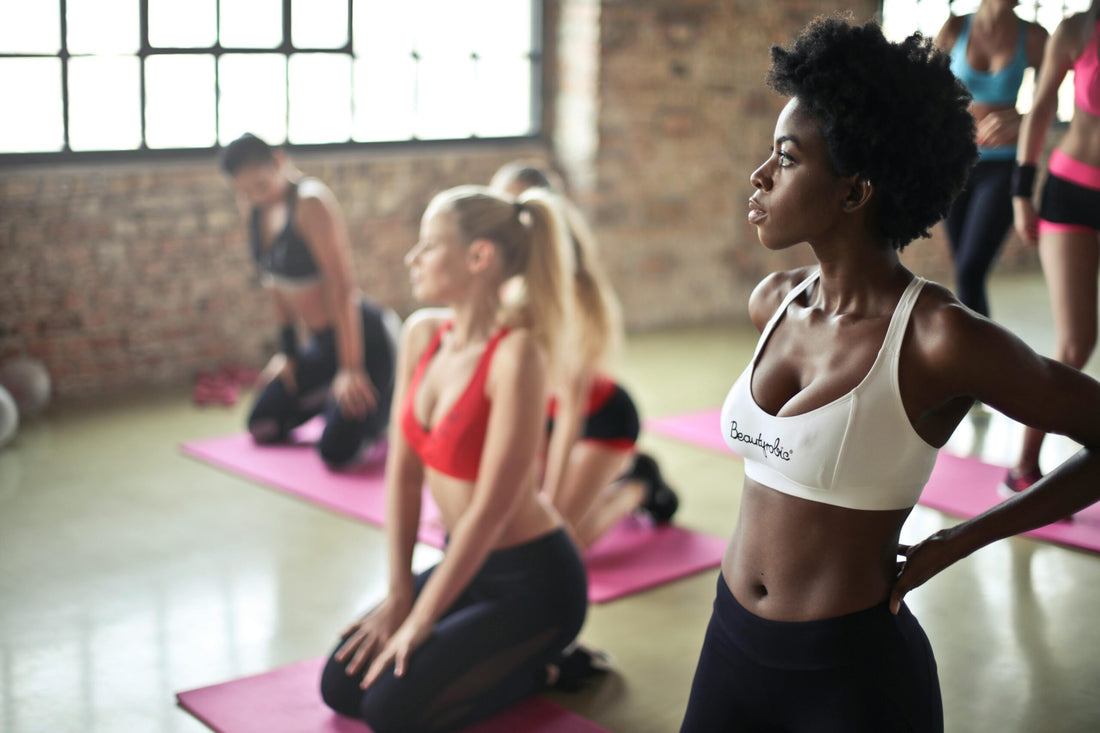
The Benefits of Low-Impact Exercises on Your Body
Share
Table of Contents
Low-impact exercises are a fantastic way to stay fit, healthy, and active without putting too much strain on your joints. Low impact cardio exercises are particularly beneficial for cardiovascular health, providing a rigorous workout without undue stress on the joints. Whether you’re recovering from an injury, managing painful joints, or just looking for a gentler way to work out, low-impact exercises can be a game-changer. Let’s dive into what makes these workouts so great and how you can get started!
What Are Low-Impact Exercises?
Low-impact exercises are activities that keep at least one foot on the ground at all times, reducing stress on your joints. Think of exercises like walking, swimming, cycling, yoga, Pilates, or a low impact cardio workout. Unlike high-impact workouts (like running or jumping), these exercises are easier on your body while still delivering serious health benefits.
Why Choose Low-Impact Exercises?
1. Gentle on Your Joints and Reduces Joint Pain
If you’ve ever felt sore after a High Intensity Interval Training (HIIT), you’ll appreciate how the lower impact exercises are kinder to your knees, hips, and ankles. They’re perfect for people with arthritis, joint pain, or those recovering from injuries.
2. Improve Heart Health
Activities like walking, cycling, and swimming are great for your heart. Studies show that low-impact cardio can reduce the risk of high blood pressure, heart disease, and even diabetes.
3. Build Strength and Flexibility
Low-impact doesn’t mean low-effort! Exercises like yoga, Pilates, resistance training, and upper body workouts using rowing machines and ellipticals can help you build muscle, improve flexibility, and boost your balance.

4. Great for Weight Management
They may not burn as many calories as running, they’re still effective for weight loss when paired with a healthy diet. Plus, they’re sustainable long-term as you are going at your own pace, so you’re more likely to stick with them.
5. Boost Mental Health
Low-impact workouts like walking or yoga can reduce stress, improve your mood, and even help with mental clarity. It’s a win-win for your body and mind!
How to Get Started with Low-Impact Exercises
1. Start Slow
If you’re new to exercise or returning after a break, ease into it. Begin with 10-15 minutes of walking or gentle yoga and gradually increase your time and intensity.
2. Choose Activities You Enjoy
The best workout is the one you’ll actually do! Try a variety of low-impact, entire body exercises like swimming, bodyweight exercises, cycling, or group fitness classes to find what you love.
3. Focus on Proper Form
Even though low-impact exercises are gentle, proper form and starting position is key to avoiding injury. If you’re unsure, consider working with a trainer or taking a class to learn the basics.
4. Mix It Up
Combine cardio (like walking or cycling) with strength training (like Pilates or resistance bands) for a well-rounded routine.
Creating a Low-Impact Workout Routine
Creating a low-impact workout routine can be a game-changer for your fitness journey, especially if you’re looking to minimize the risk of injury while still reaping the health benefits. Here’s how you can get started:
Low-Impact Exercises for Specific Goals
Low-impact exercises can be tailored to meet specific fitness goals, whether you’re aiming to lose weight, improve cardiovascular health, or increase muscle strength. Here’s how you can customise your low-impact exercise routine to achieve your desired outcomes:
Top Low-Impact Cardio Exercises to Try
Here are some of the best low-impact exercises to add to your routine:
- Walking: Simple, free, and effective. Add hills or increase your speed for a challenge.
- Swimming: A full-body workout that’s easy on the joints.
- Cycling: Great for cardio without the joint stress.
- Yoga: Improves flexibility, strength, and mental clarity.
- Pilates: Focuses on core strength and alignment.
- Rowing: A total-body workout that’s gentle on the joints.
- Barre: Combines ballet-inspired movements with strength training.
FAQ About Low-Impact Exercises
1. What’s the difference between low-impact and high-impact exercises?
Low-impact exercises keep at least one foot on the ground, reducing stress on your joints. High-impact exercises, like running or jumping, involve both feet leaving the ground, which can be harder on your body.
2. Can I lose weight with low-impact exercises?
Absolutely! Low-impact exercises like swimming, cycling, and strength training can help you burn calories and build muscle, which supports weight loss when combined with a healthy diet.
3. Are low-impact exercises good for seniors?
Yes! Low-impact exercises are ideal for seniors because they’re gentle on the joints and improve balance, flexibility, and strength. Walking, yoga, and water aerobics are great options.
4. Do I need special equipment for low-impact exercises?
Not necessarily. Many low-impact exercises, like walking or yoga, require minimal equipment. For others, like cycling or resistance training, you might need a exercise bike, dumbells, or resistance bands.

5. Can I do low-impact exercises every day?
Yes, low-impact exercises are safe to do daily, especially if you vary the intensity and type of workout. Listen to your body and take rest days if needed.
Final Thoughts
Low-impact exercises are a fantastic way to stay active, improve your health, and protect your joints. Whether you’re walking, swimming, or trying a Pilates class, these workouts can help you feel stronger, more flexible, and energised. So, lace up those sneakers, grab a yoga mat, or hop on a bike—your body will thank you!
Enjoy this article?check out or 10 workouts with bench for strength training next!
